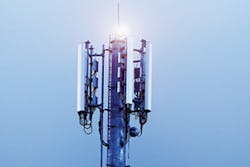Our industry is constantly taking advantage of new technologies, using some devices in off-label ways, so to speak. A recent example is the use of unmanned aerial vehicles, or drones, to inspect construction sites. Their utility now goes far beyond merely photographing the site to check the state of its BMPs and spot potential erosion and sedimentation; the technology for analyzing the data the drones collect is getting more sophisticated by the minute. Forester University has an entire webcast on the subject (http://bit.ly/2wJXser).
Now we’re making use of an even more common technology, one never designed or intended for us, to help predict the weather and its effects. It has practical and relatively mundane uses—predicting whether a scheduled baseball game will get rained out—and some potentially lifesaving ones as well.
There are many ways, of course, to predict and to track the weather, some better than others. Countries like the US have cloud-scanning radar that can measure precipitation fairly accurately in real time, but many countries, especially less wealthy ones, have no such systems. If there had been a more accurate way to measure the rain that had fallen just before the devastating landslides that occurred near Freetown, Sierra Leone, a few months ago, evacuations might have been ordered sooner; as it happens, they weren’t, and as many as a thousand people died. Even in places that do have such systems, the cost of maintaining them means many don’t function well or are even being abandoned.
There’s a cheaper way to achieve almost the same result, though, using technology that’s already in place: our now nearly ubiquitous mobile-phone networks. As a recent article (http://econ.st/2ySkPnS) in the Economist explains, “Rain weakens electromagnetic signals. Many mobile-phone towers, especially in remote areas, use microwaves to communicate with other towers on the network. A dip in the strength of those microwaves could therefore reveal the presence of rain.” Although not as accurate as traditional rain gauges, “transmission towers are far more numerous, they report their data automatically, and they cost meteorologists nothing.” Similarly, the towers can help track the movement of clouds, and the shorter wavelengths that newer towers transmit can coincidentally detect even smaller amounts of rainfall or humidity, pinpointing weather patterns more accurately than their older, longer-wavelength counterparts.
Even countries that have, or once had, weather prediction systems in place are exploring this technology, including the Netherlands, Sweden, and Israel. Satellite-based weather data in northern latitudes are so sparse that the Swedish Meteorological and Hydrological Institute has pretty much given up on them, as well as on ground-based radar and rain gauge data, and is now looking to piggyback onto the mobile-phone technology instead. One city in Sweden has begun using rainfall maps based on data that are collected every 10 seconds from a network of more than 400 cell towers—far better than its previous network of 13 rain gauges. With the new system, the city hopes to avert—or at least better prepare for—flooding and sewer overflows.
In addition to evacuations, the technology will potentially be able to improve forecasts for those who schedule ballgames or—more to our point—schedule inspections for construction sites. What other technologies are you using, or aware of, that can be adapted for inspections or other ESC uses? Leave a comment!
About the Author
Janice Kaspersen
Janice Kaspersen is the former editor of Erosion Control and Stormwater magazines.


